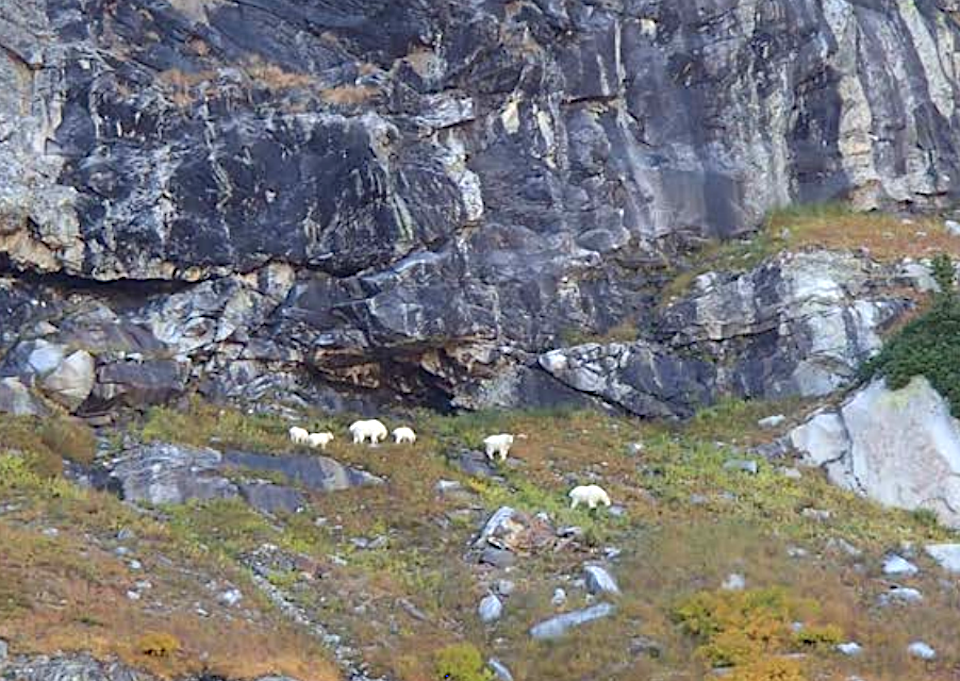
Volunteers will return to the backcountry of Grand Teton National Park this fall to kill non-native mountain goats/NPS file
Volunteers rid Grand Teton National Park of 43 non-native mountain goats last fall, and volunteers will return to the park's backcountry this fall in a bid to kill the roughly 50 goats believed to remain in the park.
The National Park Service has been working for a number of years to remove the non-native mountain goats as part of a management plan aimed to conserve a native and vulnerable population of Rocky Mountain bighorn sheep in the Teton Range.
Early in 2020 the park used airborne sharpshooters to reduce the herd, and they killed about three dozen before Wyoming Gov. Mark Gordon complained to then-Interior Secretary David Bernhardt that volunteers on the ground weren't used. Bernhardt then ordered a halt in the operation.
The park then recruited 108 volunteers, who killed an additional 43 goats last fall. This year the culling program is scheduled to resume from September 22-October 25.
The use of qualified volunteers is a tool identified in the park's 2019 Mountain Goat Management Plan. There is widespread interest among local, state, and national stakeholders in conserving the Teton Range bighorn sheep herd. The National Park Service is working on this project in cooperation with federal and state partners, including the Wyoming Game and Fish Department, and with guidance identified in the 2019 John D. Dingell, Jr. Conservation, Management, and Recreation Act.
However, the management plan also notes that, "(B)ecause mountain goats are dispersed in backcountry areas, distant from road access, and seldom seen from park trails, there is little likelihood of successful expeditious control by volunteers on the ground. Thus, there would be little benefit in developing and managing a short-term ground-based skilled volunteer program to remove mountain goats. This alternative was dismissed because it is duplicative when compared to using skilled park staff and contractors to more effectively and efficiently remove the remaining mountain goats from the Teton Range."
Despite that determination, the Park Service has moved ahead with using volunteers on the ground and kept the airborne sharpshooters grounded.
This year, in the interest of safety and efficiency, the park is only drawing on qualified volunteers who were trained and participated in the program last year. There are significantly fewer mountain goats in the park and removal will be exceedingly more difficult, a park release said.
Last year’s participants must once again undergo a background check, and may not have active warrants, past wildlife violations, or violations associated with Grand Teton National Park. Volunteers identified as shooters must successfully pass a mandatory firearm proficiency evaluation. All volunteers are United States citizens and at least 18 years of age.
The Teton Range is home to a small herd of native bighorn sheep that is currently estimated to have at least 125 animals. As one of the smaller and most isolated herds in Wyoming that has never been extirpated or augmented, it is of high conservation value to the park, adjacent land and wildlife managers, and visitors. The National Park Service has a responsibility to protect native species and reduce the potential for local extinction of a native species within the park.
Mountain goats were introduced into the Snake River Range in Idaho, and over the years their population expanded and reached the Teton Range. Mountain goats can carry bacterial diseases that are lethal to bighorn sheep. The Teton Range bighorn sheep population has been relatively isolated and is therefore likely ‘naïve’ to these diseases.
Without immediate intervention, the mountain goat population is expected to grow and could contribute to the potential extirpation of the native bighorn sheep.
There are key differences between a culling program in a national park and traditional recreational hunting. Culling in a national park is done exclusively for conservation and stewardship purposes, while hunting is primarily for recreation or procuring food.
Culling in a national park is conducted under controlled circumstances with the supervision of National Park Service personnel, while hunting is performed at the hunter’s discretion, subject to applicable licensing and laws.
Volunteers may not keep a trophy when participating in a culling program in a national park. The meat may be donated or distributed to Indian Tribes, qualified volunteers, food banks, and other organizations that work to address hunger, in accordance with applicable health guidelines.
Culling in a national park does not generate revenue and does not include fair chase.



Comments
Acadia National Park has too many native whitetail deer that overrun areas outside the park boundary. Acadia covers half of Mount Desert Island's land area with unfenced irregular boundaries, and the privately owned half of the island is crowded with visitors and residents from May through October. Hunting is dangerous and probably not a solution to Acadia's deer problem. The deer population is too large because natural predators like wolves have been eliminated. Restoring the wolf population might mitigate the deer problem.